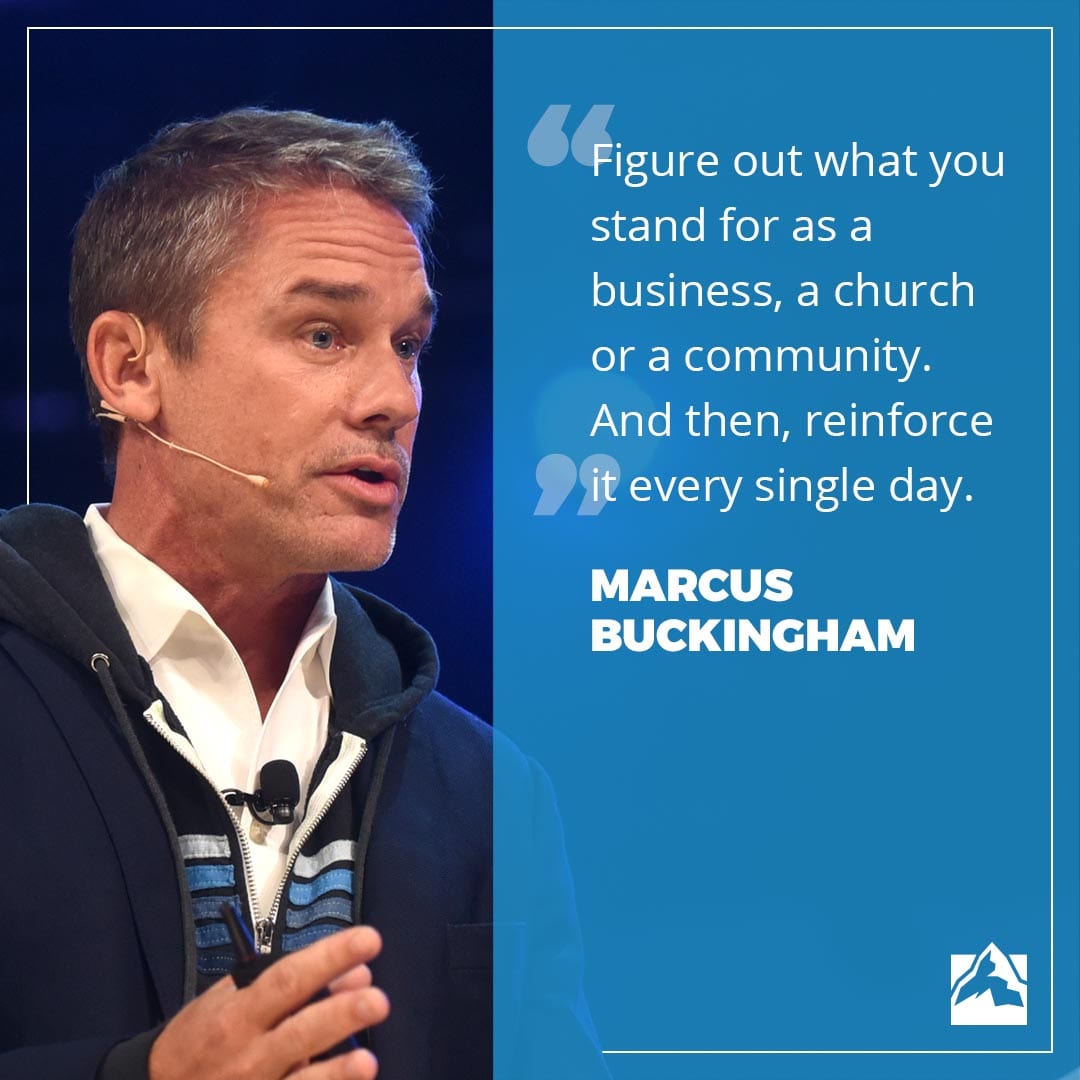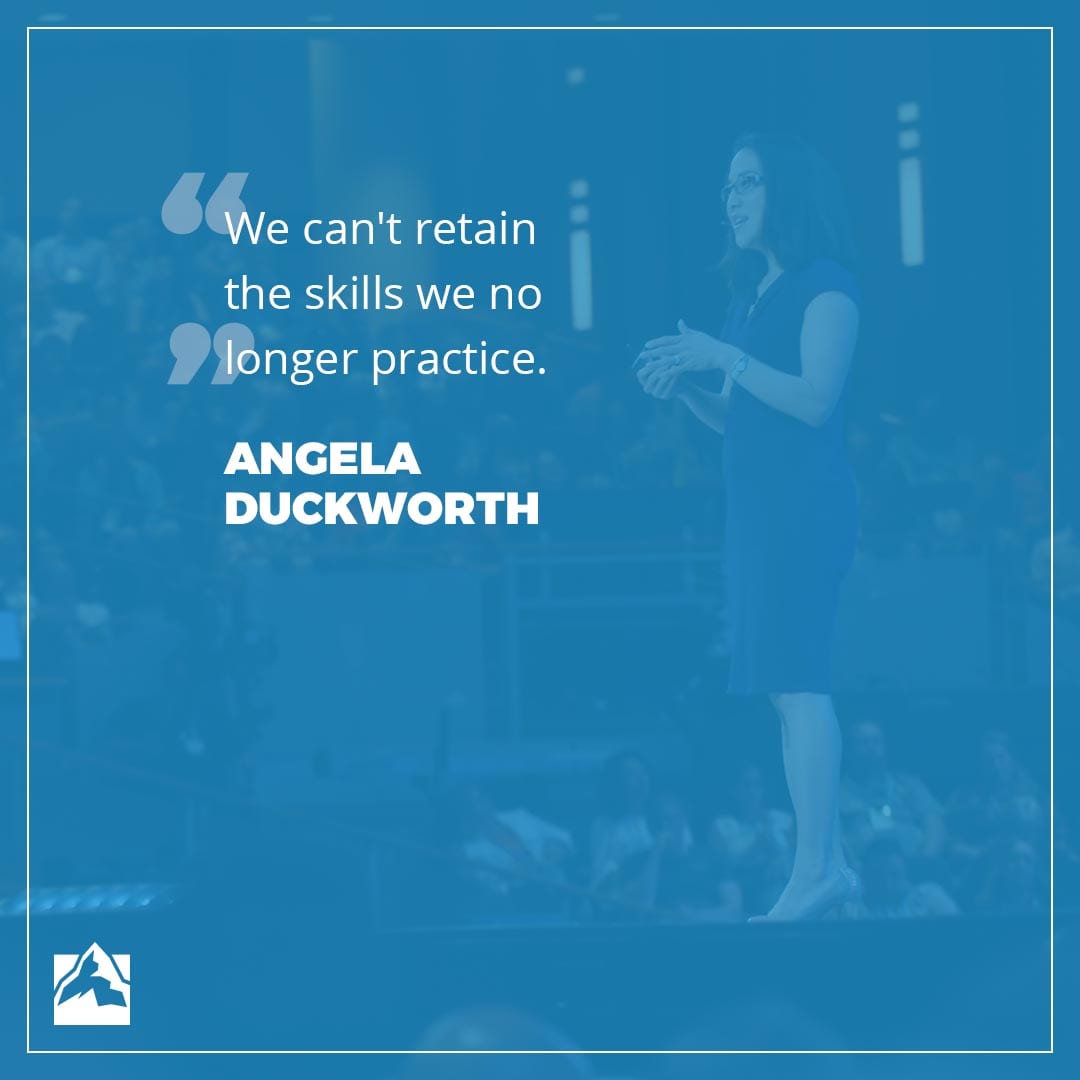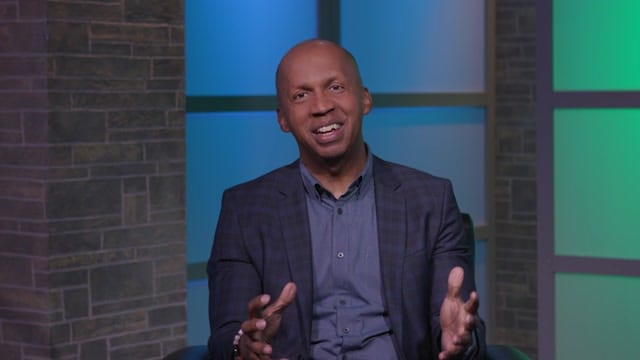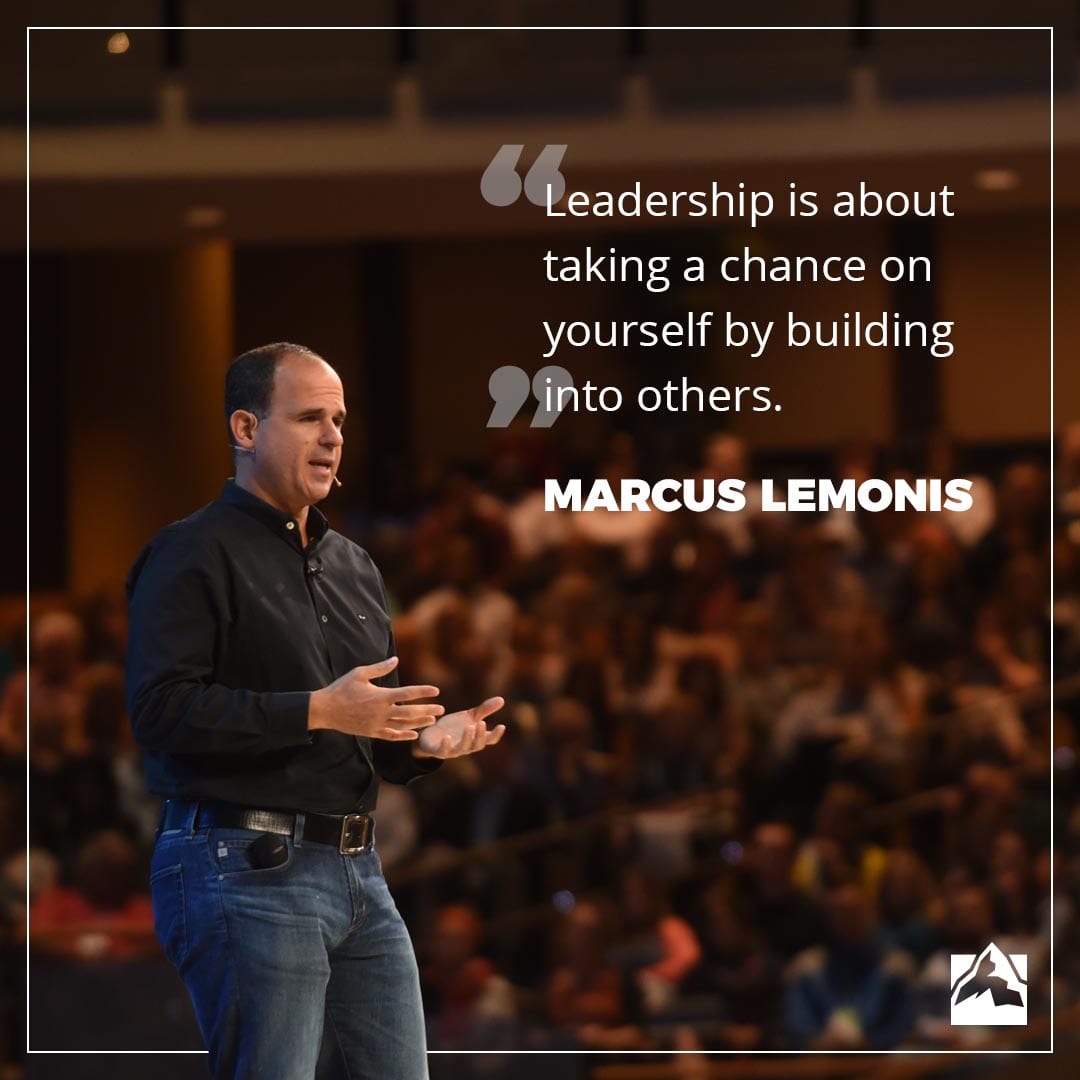
This Skills in Action outlines a proven process to help you wrestle through your anxieties by identifying the common sources of, and emotional responses to fear.

This Skills in Action outlines a proven process to help you wrestle through your anxieties by identifying the common sources of, and emotional responses to fear.

When it comes to tapping into the competitive advantage of diversity, few companies succeed. Recently, I was reminded why.
Our firm was having a meeting to discuss important elements of our strategy and marketing efforts when something really great happened. We got into an argument not a disagreement a loud, contentious, uncomfortable and passionate argument.
On one side of the battle was a pair of our team members who were arguing their point based on a very accurate and literal interpretation of something we had decided months earlier. On the other side was a group of team members that was even more loudly making their point (probably because I was a member of that group, and I’m Italian and Irish) based on a more theoretical interpretation of that past decision.
For a few minutes, our debate sounded more like a brawl, with team members calling each other out for their intellectual biases and blind spots. Fortunately, because there is a great deal of trust on our team, our argument never came anywhere close to personal or mean-spirited attacks, though an outsider who didn’t know us certainly would have thought it did.
When the melee was over and we had arrived at a decision, a couple of things occurred to me.
First, the conflict we had engaged in as uncomfortable as it felt at the time was a wonderful thing. It allowed us to get closer to the truth, which often lies somewhere between two divergent points of view. (Though this was not a new revelation for me, I am amazed at how much I still need reminders.)
Second, those divergent points of view were based, not on randomness, but on the diverse personality profiles of the people on either side; one side was comprised of our more rational and data-driven team members while the other side represented our more emotional, intuition-dependent people.
Which brings me back to the power of diversity, and the reason why it remains so misunderstood and under-exploited in most organizations: it requires conflict.
The practical advantage of diversity boils down to this: a group of people with different perspectives usually makes better decisions and finds more creative solutions than those who have largely similar views, backgrounds and skill sets. This is true for all teams, whether they’re running a corporation, a church, a school or a movie studio. However, when a team cannot productively engage in conflict, not only does that diversity remain untapped, it becomes a competitive disadvantage.
That’s because when team members with divergent points of view cannot openly and passionately advocate their positions, the team will not be able to understand properly and incorporate those ideas into a final decision. Instead, they will frustratingly agree to compromise, walking away dissatisfied with the outcome and resentful of their team members whom they still don’t understand.
This is the norm in virtually every organization where I’ve worked or consulted. And that’s because when we talk about diversity, the emphasis is usually on acceptance and tolerance and “getting along” all of which, of course, are good things. The problem surfaces when those qualities prevent people from challenging one another’s points of view out of fear of being labeled close-minded or intolerant.
And so the key to making diversity work is to teach people first how to appreciate one another’s differences, and then how to challenge them in the context of pursuing the best possible outcome. When a company can do that, it will transform diversity from a slogan to a real competitive advantage.

Figure out what you stand for as a business, a church or a community. And then, reinforce it every single day.

Pastor and leadership expert Andy Stanley describes how they take the risk out of developing young leaders at North Point Community Church.

 Matt Blakely started a business called MB3 over a decade ago to help states recover from natural disasters. The software he developed now manages over $40 billion dollars in disaster grants. He used to describe himself as the typical, controlling CEO for the first ten years of running his business, but saw a radical turnaround in part due to what he learned at The Global Leadership Summit. Since then, he developed an obsession with setting others up for success. Matt took everything he learned and wrote a book called Empower Then Lead, which has a framework that he now teaches to others.
Matt Blakely started a business called MB3 over a decade ago to help states recover from natural disasters. The software he developed now manages over $40 billion dollars in disaster grants. He used to describe himself as the typical, controlling CEO for the first ten years of running his business, but saw a radical turnaround in part due to what he learned at The Global Leadership Summit. Since then, he developed an obsession with setting others up for success. Matt took everything he learned and wrote a book called Empower Then Lead, which has a framework that he now teaches to others.
I started my company in my early 20s. It was 2004, and I was on vacation with my family in Florida. While we were there, I went to lunch with my friend Jason who worked in disaster recovery for the Florida state government. He told me about the devastation caused by a hurricane that had struck the Florida coast recently and the massive amount of paperwork the state would have to process, including an unprecedented number of requests for financial assistance to help communities rebuild. Working seven day weeks, 12 hours a day, the recovery team was worn out.
Jason seemed to be thinking out loud when he asked if I could help with some sort of software solution and offered to introduce me to Del, the person in charge of the recovery effort.
So there I was at 23, walking into Del’s office with no product to show, to ask for his trust on a long-shot idea. Miraculously, he said yes, which changed the trajectory of my life in a hurry. Overnight MB3 was born.
 I spent a week driving with Jason to the hardest-hit areas of the state, surveying the damage firsthand. I saw entire communities nearly wiped out, met with city and county officials and listened as Jason explained how the state was going to help with the recovery efforts. I not only learned about the problem, but also became passionate about finding a way to help get people’s lives back together.
I spent a week driving with Jason to the hardest-hit areas of the state, surveying the damage firsthand. I saw entire communities nearly wiped out, met with city and county officials and listened as Jason explained how the state was going to help with the recovery efforts. I not only learned about the problem, but also became passionate about finding a way to help get people’s lives back together.
Over a six-month period, I worked to build the product just fast enough to stay ahead of where the state was in the process. I joined the rest of the team, working inhumane hours, and became known as the kid who did magical stuff on my computer that saved the day.
I wasn’t ready for the software to transfer outside of Florida when Hurricane Katrina hit New Orleans and the surrounding areas, but that didn’t stop it from happening.
I hit the road again and spent the next six months working in Louisiana, Mississippi, and Alabama witnessing the devastation. I drove through communities where every single house had been devastated. Thousands of cars had been abandoned on the sides of roads, completely destroyed by floodwater and debris. Along the Mississippi coast, some places looked like a total war zone, even months after the disaster. On a road along the ocean I saw faded parking spot lines on pavement next to buildings that were no longer there where people once lived and worked.
As with Florida, experiencing what clients went through was an incredible opportunity. But in this case, I saw a direct link between the software and the damage. Being so closely involved in the situation shaped both my life and everything MB3 would come to do afterwards.
Fast forward ten years, and the company has grown to having our software manage over $40 billion in 16 states, including recovery funds for hurricanes Harvey in Texas and Irma in Florida. We have an office in Canada and the United States, and a team of 20 people.
But there is a key transition between the story of how the company started and where we are now.
 A few years ago, I hit a wall in my business; I was desperate to expand, but I was so involved in the day-to-day tasks that I couldn’t seem to move forward. I began to realize that I was the bottleneck preventing growth.
A few years ago, I hit a wall in my business; I was desperate to expand, but I was so involved in the day-to-day tasks that I couldn’t seem to move forward. I began to realize that I was the bottleneck preventing growth.
Someone I respect told me to take a step back for a few weeks during the summer and just read. To me it sounded like a prison sentence, not because I disliked learning, but more because it meant pausing my life. But I did it. I read books like my job depended on it. And at the end of that summer, I attended The Global Leadership Summit. Empowerment was the uniform theme I believe God was revealing to me.
The main session that impacted me from the Summit that year was from Horst Schulze. He talked about personally sharing the vision with the entire team of new hotel locations he opened. I was challenged when he talked about caring for his team because it was simply the right thing. He also said, as leaders we forfeit the right to make excuses, which meant I had to take responsibility for not having a successful team.
I committed to giving 100 percent to implement this new empowerment initiative. I spent the next 12 months obsessed with setting up my team for success and seeing them thrive. I switched my mindset to seeing my impact vicariously through others. Prior to this, I was the one in the spotlight, running the show, making all the big decisions and doing the important work. Now I was trying to make each person on my team the hero, while I played more of a supporting role, elevating others so they could shine. I saw my role as existing for the benefit of my team. If a bad decision was made, it was because I didn’t set them up to succeed.
This season of learning ended up being the catalyst for my book Empower Then Lead: Have a greater impact by setting up your team for success. The book contains everything I’ve learned about empowering leadership and the phenomenal results from these principles.
I used to define “impact” as making more money and growing something, but now I see it as people.
Positively affecting people is now impact to me (and incidentally seems to help me achieve). Everybody knows it’s better and more fulfilling to do something for others instead of for yourself. Unfortunately, it’s not usually lived out in the business world and is rarely applied to leadership.
I probably should have seen it sooner since this is exactly how Jesus lead. His name has lasted for centuries, yet from what the Bible says, Jesus worked with his team (his disciples) for only three years. He didn’t even travel that far around the world to share his cause. His game plan seemed to be empowering other people to spread the message.
He saw potential in everyone he encountered and always assumed success. He even told people they would do greater things than he did, which is not typically an attitude held by today’s leaders. The Bible says that Jesus came “not to be served but to serve others” (Mark 10:45 NLT). It also says, “In humility, value others above yourselves, not looking to your own interests, but each of you to the interests of the others” (Phil. 2:3-4 NIV). That’s exactly the example I want to follow.
You have to ask yourself what you want from your life. Do you just want to build an organization and make money, or do you also want to be a leader who makes a positive impact in the lives of the people around you? Setting other people up for success is truly rewarding leadership, where fulfillment comes from focusing on others first.

We can’t retain the skills we no longer practice.

Attorney Bryan Stevenson recounts the unexpected way that he discovered his calling to the work of justice.

Leadership is about taking a chance on yourself by building into others.

The scene was familiar; the faces of the attendees reflected both their anticipation and excitement for what was about to happen. Although I’ve seen this same scenario repeated in dozens of countries, it never gets old. Women and men investing their time, energy and resources to grow as leaders is always inspiring.
 This time, the crowds were gathering in in Guatemala City, one of 10 sites for the Global Leadership Summit (GLS) in Guatemala in the 2017 Summit season. After attending more than 20 GLS events in the United States, to see the Summit executed with the same level of intentionality and attention to detail in this setting was a real treat.
This time, the crowds were gathering in in Guatemala City, one of 10 sites for the Global Leadership Summit (GLS) in Guatemala in the 2017 Summit season. After attending more than 20 GLS events in the United States, to see the Summit executed with the same level of intentionality and attention to detail in this setting was a real treat.
Having been in some of the early meetings back at South Barrington, Illinois when simulcast events were merely an experiment, I think the team understood even then God could use virtual messengers just as much as live, in-the-flesh communicators.
Their hunch was correct!
 Today, hundreds of thousands of leaders around the planet can experience this annual infusion of leadership principles and practices in their own language, hosted by their own people. In the US, I’m fearful we may take the GLS for granted; for much of the world, the Summit is a gift. My experience in Guatemala was a gift to me!
Today, hundreds of thousands of leaders around the planet can experience this annual infusion of leadership principles and practices in their own language, hosted by their own people. In the US, I’m fearful we may take the GLS for granted; for much of the world, the Summit is a gift. My experience in Guatemala was a gift to me!
The team on the ground was amazing! Scores of volunteers had been trained and coached to execute the event with precision. At the debrief session after Day 1, everyone was energized, thankful, and intent on making Day 2 even stronger. The team leaders were encouraging and exacting. The team hosted thousands of attendees with grace and high levels of hospitality.
Their attention to the needs of the attendees was as high as I’ve seen at any event anywhere. During one session, I was struggling to connect my translation device. I was just playing with the knobs, changing channels looking for a better signal when one of the volunteers approached me to see if he could help. Keep in mind, this was during a session, and I was not seated in a VIP section; I was just an attendee with an issue. The staff was on it; they replaced my receiver issue resolved.
 For years, I’ve heard the team at Willow say, Excellence honors God and inspires people. This value was on full display in Guatemala.
For years, I’ve heard the team at Willow say, Excellence honors God and inspires people. This value was on full display in Guatemala.
The GLS is not a single event merely repeated hundreds of times, rather it’s the tip of the spear that can literally change the world. “When a leader grows, everyone wins.”

“One can choose to go backward toward safety or forward toward growth. Growth must be chosen? again and again; fear must be overcome? again and again.” – Abraham Maslow
One of the most frequent commands God gives us in Scripture is, “Do not be afraid.”
Why? Because fear is inevitable. And fear can be paralyzing and suffocating.
Fear prevents us from tackling the brave, important tasks we were created to accomplish. When leaders are ruled by fear, there are even greater consequences, because it affects their businesses, their employees and their communities.
My son, Kenny, worked for a grocery store while attending college in Southern California. Late one night, a man came running past him while he stood near the check-out stands. As the man ran past, he turned to face Kenny, pulled out a gun and began shooting toward him. Kenny found himself in the center of a shootout between the gunman and a police officer.
He quickly dove for cover behind a chip display as shards of nacho cheese snacks and debris flew all around him. The sound of the shattering glass doors at the entrance, coupled with two guns firing at close range, left Kenny dazed and temporarily deaf.
After the crossfire ended, Kenny was sent to give a statement at the police station, where he crossed paths with an interesting couple. They were from Washington State, and the husband was an accounting professor. He had always wanted to teach at a Christian university, and he just so happened to be interviewing at the school Kenny attended.
The school offered the man the job. However, his wife had reservations about living in Southern California; she had heard it was a dangerous place to live. The university encouraged the couple to make a trip to the area to get a feel for Southern California. After landing at the airport, they decided to stop at a local grocery store for some snacks before heading to their hotel. Instead of getting snacks, their rental car was riddled with the very bullets Kenny was dodging inside.
This couple had been in Southern California for less than two hours, and their worst fears were coming true. Thankfully they were not harmed, but their nerves were severely rattled. As Kenny heard their story, he thought, There’s no way this guy is taking the job.
Three months later, Kenny was working late at the grocery store when he spotted the woman from Washington. She told Kenny they had decided to take the job and move to Southern California. She said, We’re not going to let some random act of violence keep us from doing what God wants. We’re not going to let fear have the last word!
The world needs more leaders, pastors and CEOs who will courageously step forward.
Author and humanitarian, Rosalie Bardo, once said, “In any given moment we have two options: to step forward into growth or to step back into safety.”
I often consult with NGOs, executive teams at churches and nonprofit leaders. When I consult, I always ask the leaders to share their greatest fears. As they share, I often hear common themes including:
I ask them to rate, on a scale from 1-10, how much fear is influencing their decisions. The average falls somewhere between 7 and 8. That number is too high.
Here are 3 ways you can overcome fear in your life:
1. Do the thing you fear the most
This is what leaders are called to do. C. Joybell C., author of The Sun is Snowing, once wrote, “Don’t be afraid of your fears. They’re not there to scare you. They’re there to let you know that something is worth it.”
2. Surround yourself with people who will remind you to be brave
We cannot be brave alone. We cannot overcome fear in isolation. A. A. Milne, the creator of Winnie the Pooh, said, “Promise me you’ll always remember: You’re braver than you believe, stronger than you seem and smarter than you think.”
3. Lean into God’s love
Scripture reminds us that perfect love casts out all fear. Love and fear cannot coexist. Love expands, and fear constricts. Love frees, and fear restricts. Love clarifies, while fear contradicts.
The words “fear not” are found 365 times in Scripture, one for each day of the year.
Author Stephen Hunt once said, “If you are not living life on the edge, you are taking up too much space.” We don’t need more leaders taking up space. Our communities need leaders who will lean into fear and choose to be brave on the edges. Our world is desperate for these kinds of leaders.
Each day, fear will attempt to keep us from courageously following God’s calling on our lives. The leaders of today cannot stay bound by fear or take the safe, comfortable, non-controversial road toward ineffective mediocrity.
Rather, may we become courageous leaders who have the bravery to overcome.
“We welcome and encourage comments on this site. There may be some instances where comments will need to be edited or removed, such as:
If you have any questions on the commenting policy, please let us know at heretoserve@globalleadership.org”
Recent Comments